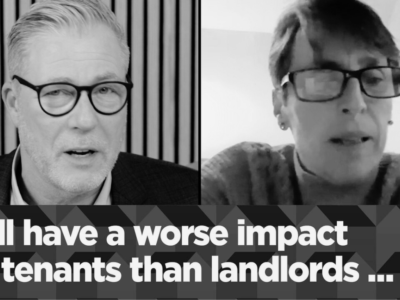Retiree renters and those in upper-middle age category are the fastest growing tenant groups in the private rented sector (PRS), analysis from Paragon Bank has found.
Paragon’s new report ‘The Growth of Later Life Tenants’, released today, showed that the number of English households in the 55-64 year old age category in the PRS with an Assured Tenancy has risen by 118% since the turn of the last decade, with those aged over 65 growing 93%. This rate of growth is nearly double the rate of the next fastest growing segment – 35-44 year-olds.1
Paragon’s research also reveals that later life tenants are generally happier in private rented accommodation that other age groups and have lived in the PRS for longer.
Nearly seven in 10 (68%) of over 55s said that renting suited their needs or they enjoyed renting, compared with 49% in the under 55 group, whilst an overwhelming majority (63%) said they were pleased they don’t have to worry about repairs.2
Richard Rowntree, Paragon Bank Managing Director of Mortgages, said:
“There are a number of factors that may have contributed to the increase in over 55s in the PRS over the past 10 years, such as rising divorce amongst older people, poorer pension returns and men living longer.”
“With the number of over 55s forecast to rise from 30% of the population to 36% by 2043 and new household formation predicted to be driven by older, single person households, the PRS will have an increasingly important role to play in providing a home for older tenants.”
| Number of households by Household Reference Person Age (000s) | ||||||
| 16-24 | 25-34 | 35-44 | 45-54 | 55-64 | 65+ | |
| 2009/10 | 393 | 890 | 569 | 347 | 150 | 129 |
| 2018/19 | 400 | 1090 | 943 | 543 | 327 | 249 |
| %+ | 1.80% | 22.50% | 65.70% | 56.50% | 118% | 93% |
At 576,000, those aged over 55 represent 16.2% of privately rented households and this has steadily grown since the turn of the decade, when 11.3% of the sector was made up of over-55s.
Paragon’s research showed landlords appear to be responding to this change in demand, with 21% of landlords expecting to let more to older singles in the future and 20% expecting to let to retirees. This was second only to letting to professionals or executives/companies.
Paragon research also found:
- When asked about the reasons for renting, 39% said they didn’t have a mortgage deposit, whilst 22% said they didn’t want the responsibility of owning a home – compared to 9% of under 55s – and 16% said it enabled them to live in an area they couldn’t afford to buy and 15% because it gave them the flexibility to move easily
- Tenants in the 55+ category are also much less likely to want to own their home – 45% compared to 81% of under 55s. Of those who do, 62% don’t think they will be able to afford their own home, whilst one in five (18%) believe they will buy within the next two years
- Over 55s are much more likely to live alone, with nearly half (48%) in this category versus 23% of under 55s, and they also tend to live in the property for a long period. They are also much more likely to be men, accounting for 62% of tenants
- Half (49%) of over 55s have lived in only one or two rented properties; of those who have lived in only one property, 46% of tenants have lived there for 10 years or more. The average length of time tenants have lived in the PRS is 13 years
Population forecasts show that by 2043, the proportion of the UK population aged over 55 will increase from 30% today to 36%, or 26 million people.
The number of households in England is expected to grow from 23.2 million today to 24.8 million by 2028 and 26.3 million by 2038, and it will be people in the 55+ age bracket driving that growth, with those aged 75 or over recording the strongest increase.
By 2028, according to ONS stats, there will be a 34.5% increase in the number of households with an HRP of between 75 and 84 years and a 24.1% increase in households with an HRP of 85 or older. Over 55 households will account for half of England’s total households by this point.
Richard Rowntree concluded:
“Landlords are already reacting to the changing demographics of the PRS and, with older tenants becoming more commonplace, will have to increasingly do so.”
“Landlords will need to consider longer tenancy agreements, the location of their property and any adjustments the property may need for later life tenants.”

























Comments